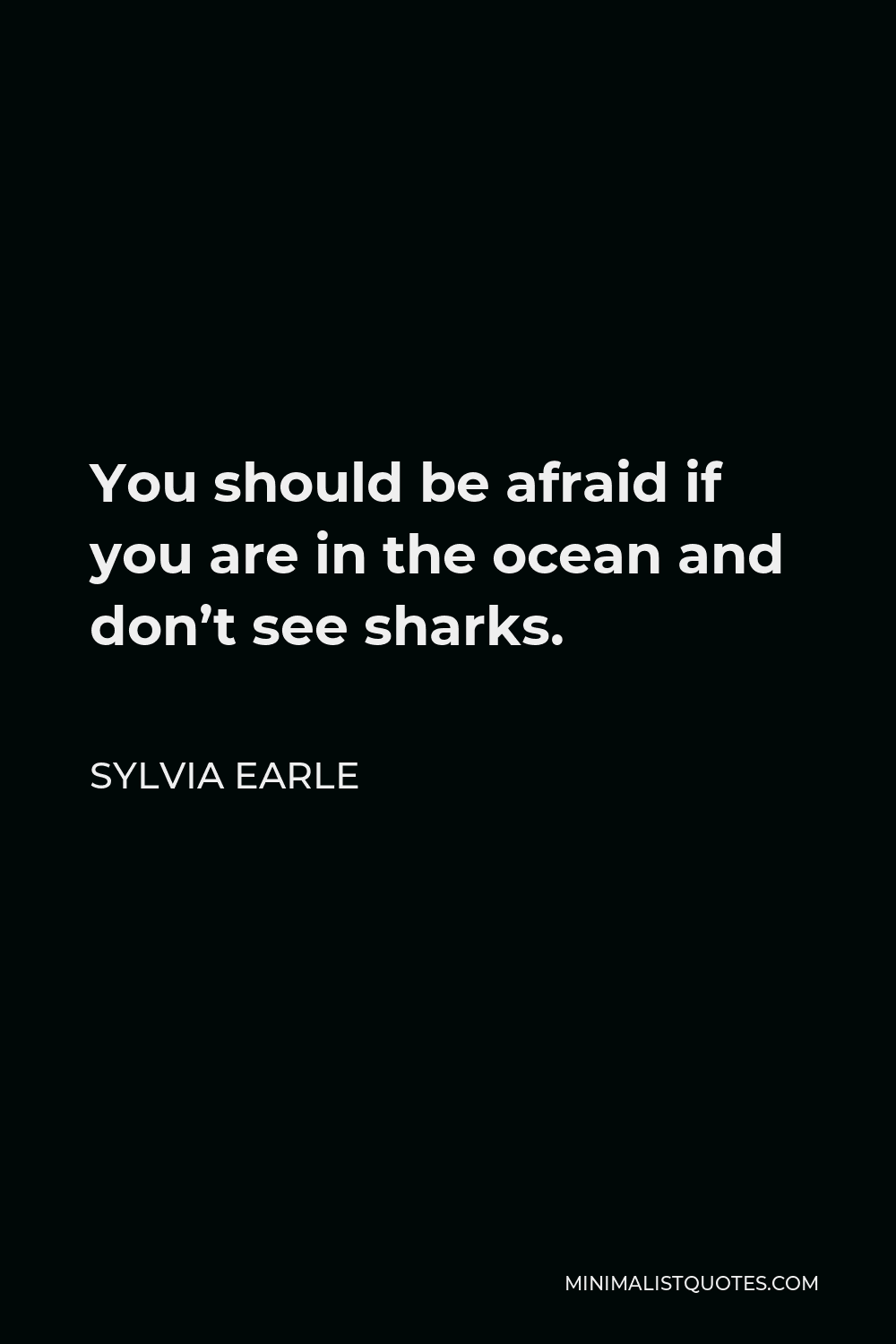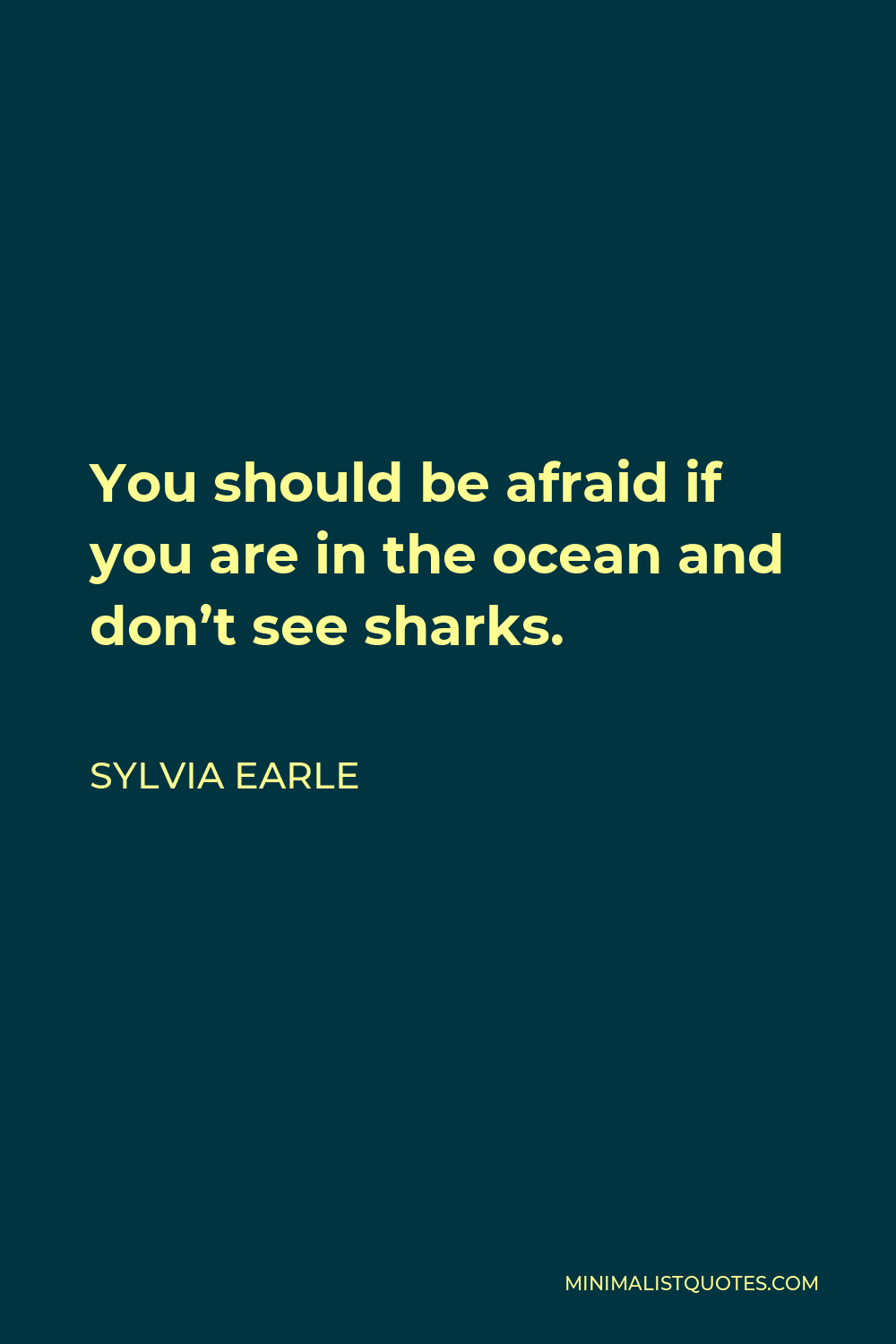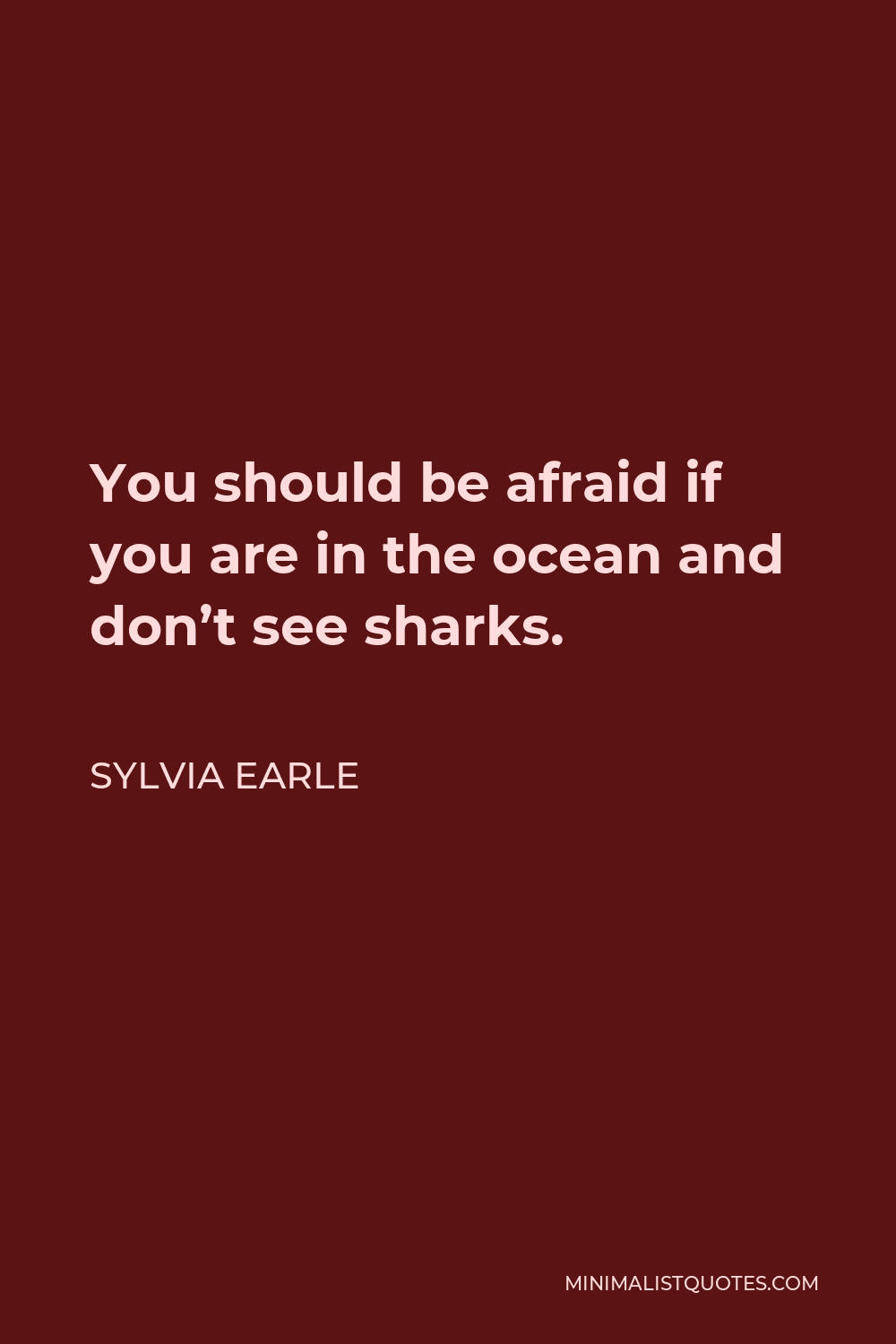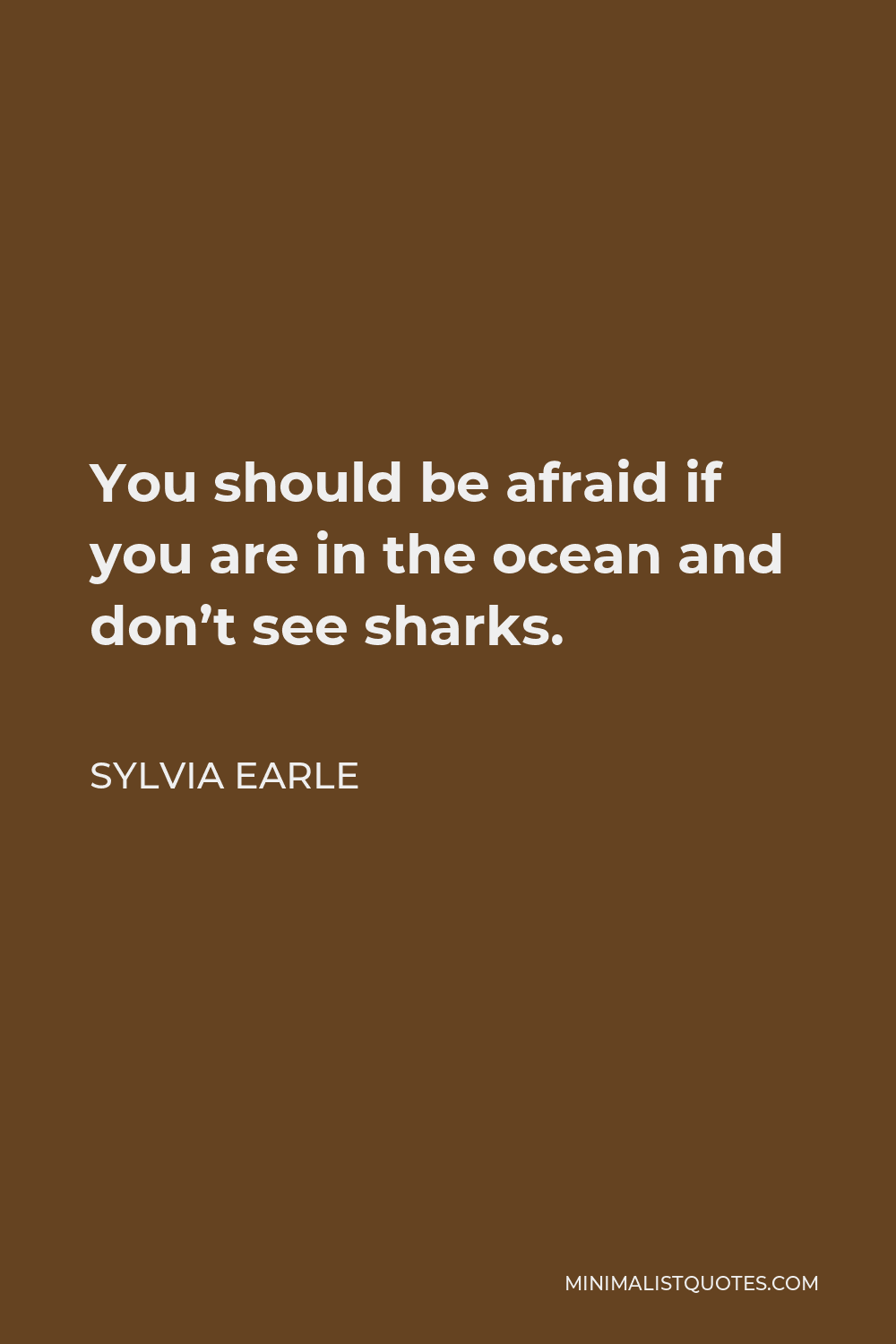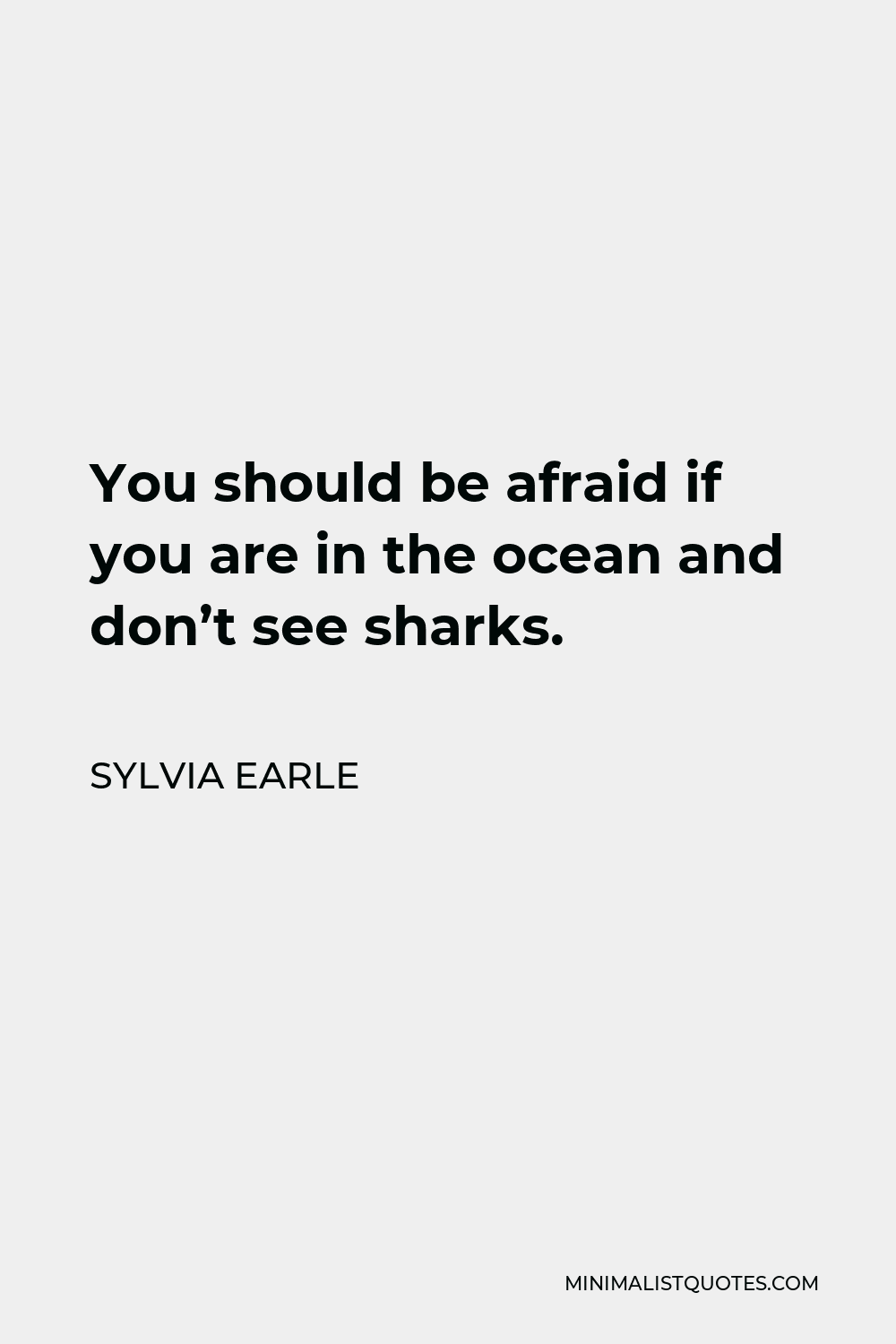Everyone has power. But it doesn’t help if you don’t use it.
SYLVIA EARLEYou should be afraid if you are in the ocean and don’t see sharks.
More Sylvia Earle Quotes
-





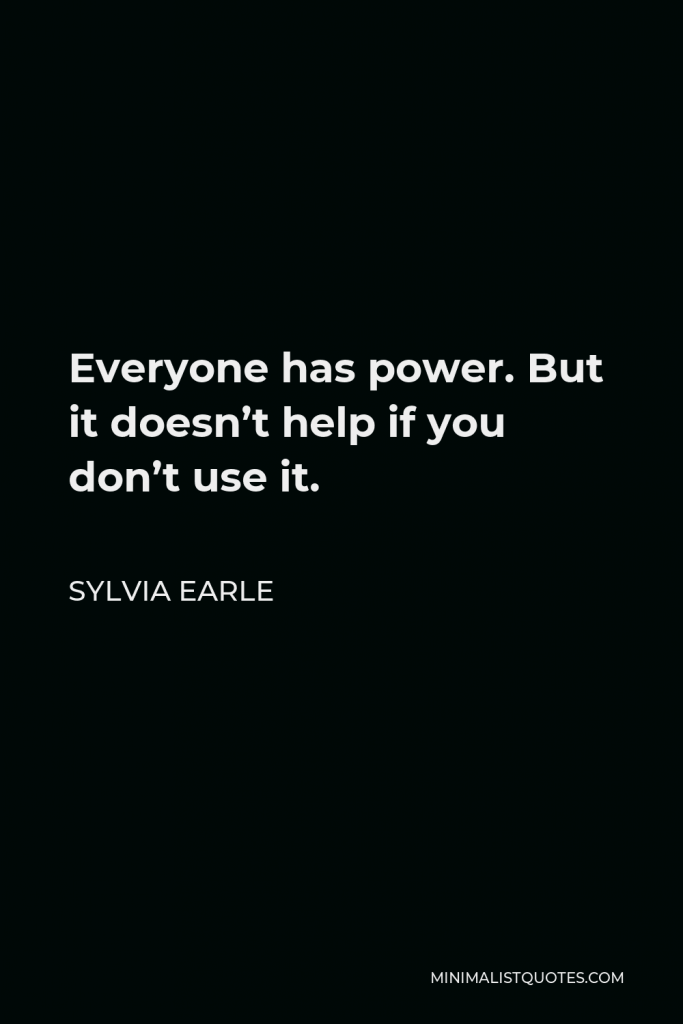

-





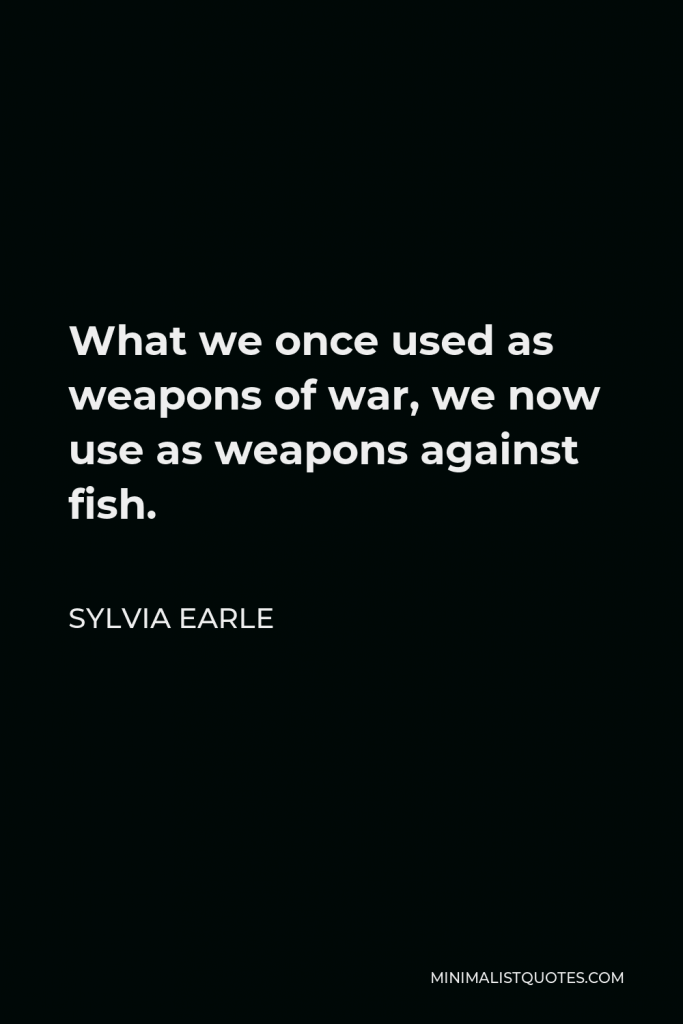

What we once used as weapons of war, we now use as weapons against fish.
SYLVIA EARLE -





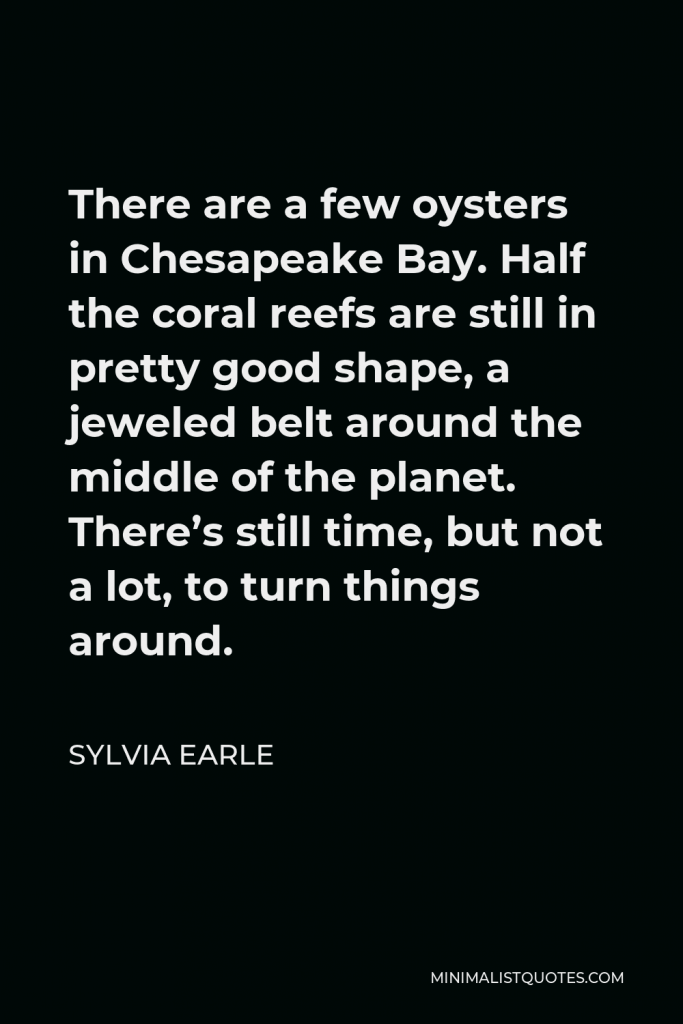

There are a few oysters in Chesapeake Bay. Half the coral reefs are still in pretty good shape, a jeweled belt around the middle of the planet. There’s still time, but not a lot, to turn things around.
SYLVIA EARLE -





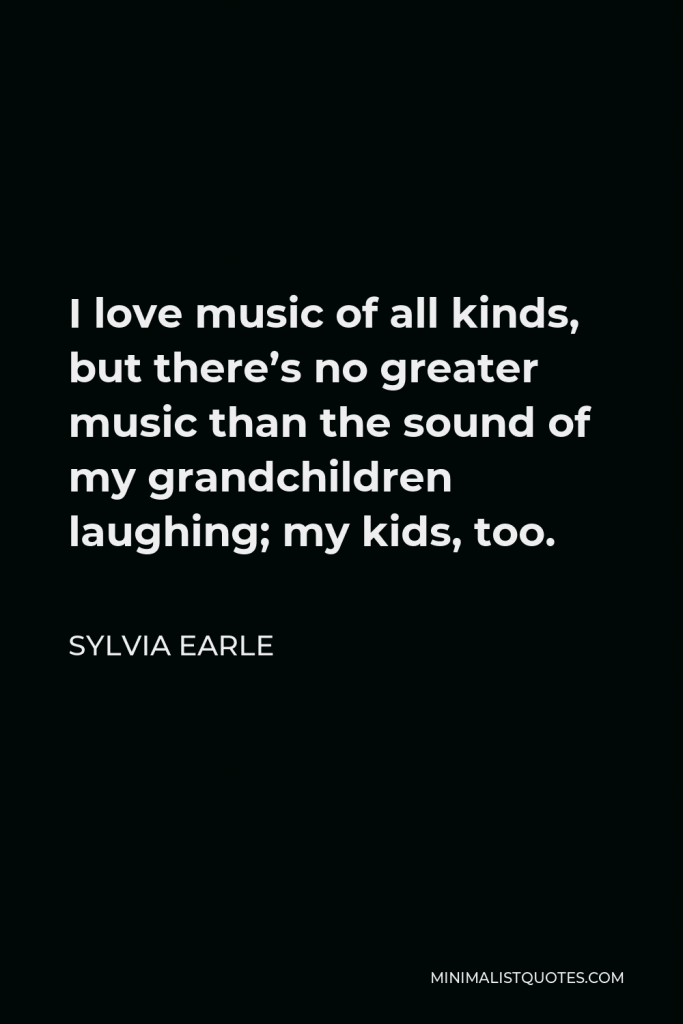

I love music of all kinds, but there’s no greater music than the sound of my grandchildren laughing; my kids, too.
SYLVIA EARLE -





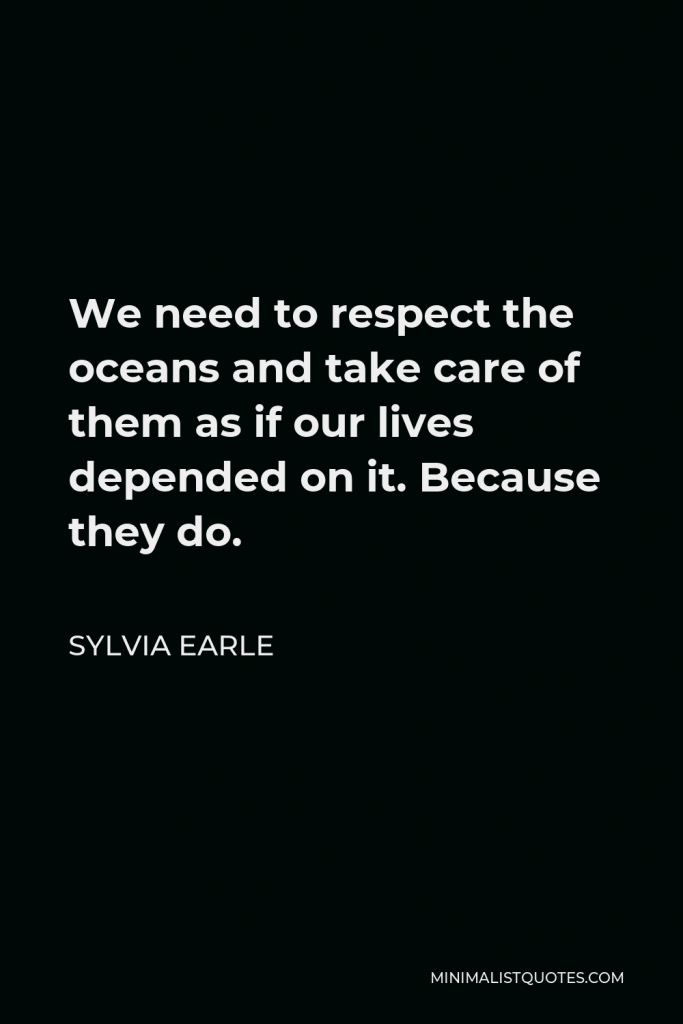

We need to respect the oceans and take care of them as if our lives depended on it. Because they do.
SYLVIA EARLE -





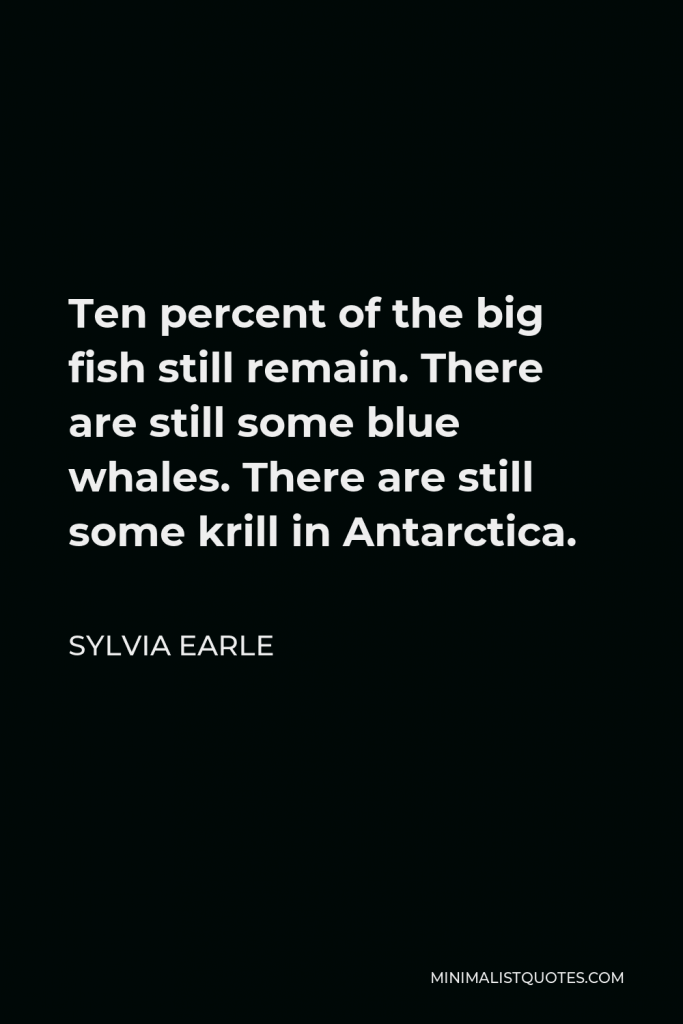

Ten percent of the big fish still remain. There are still some blue whales. There are still some krill in Antarctica.
SYLVIA EARLE -







They are so beautiful, a pair is in the Museum of Modern Art. The set I have are ruby red. I call them my ruby flippers.
SYLVIA EARLE -





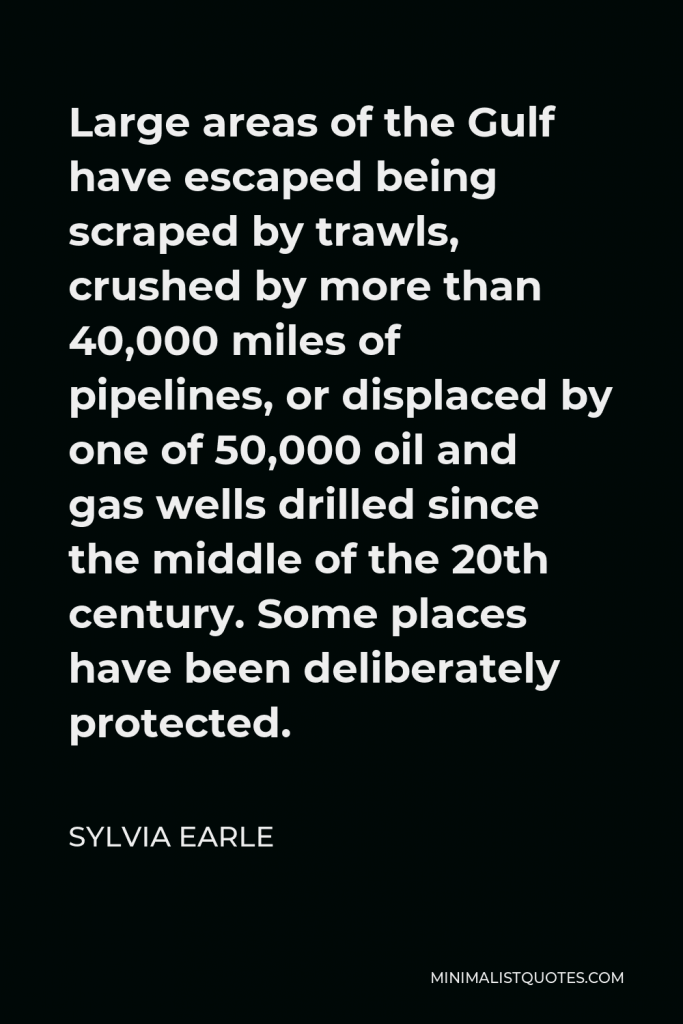

Large areas of the Gulf have escaped being scraped by trawls, crushed by more than 40,000 miles of pipelines, or displaced by one of 50,000 oil and gas wells drilled since the middle of the 20th century. Some places have been deliberately protected.
SYLVIA EARLE -





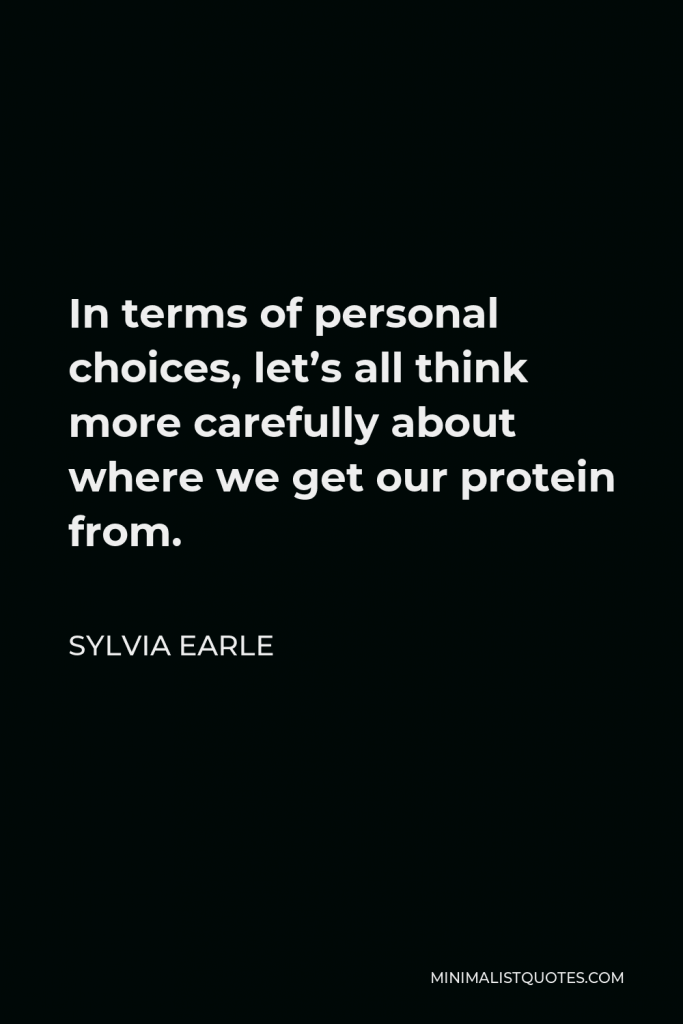

In terms of personal choices, let’s all think more carefully about where we get our protein from.
SYLVIA EARLE -





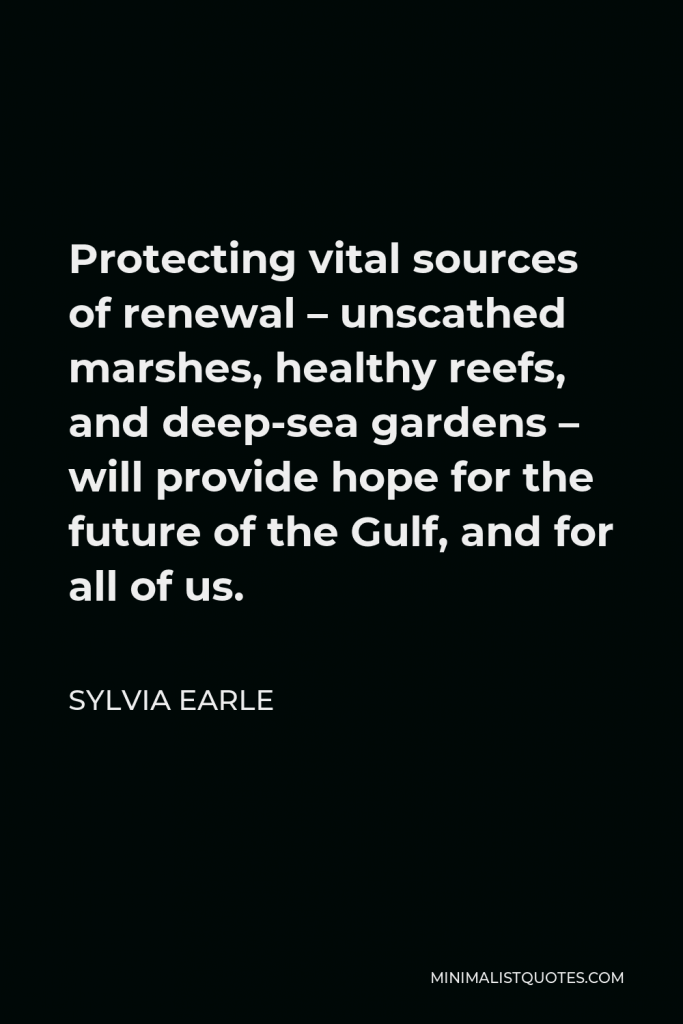

Protecting vital sources of renewal – unscathed marshes, healthy reefs, and deep-sea gardens – will provide hope for the future of the Gulf, and for all of us.
SYLVIA EARLE -





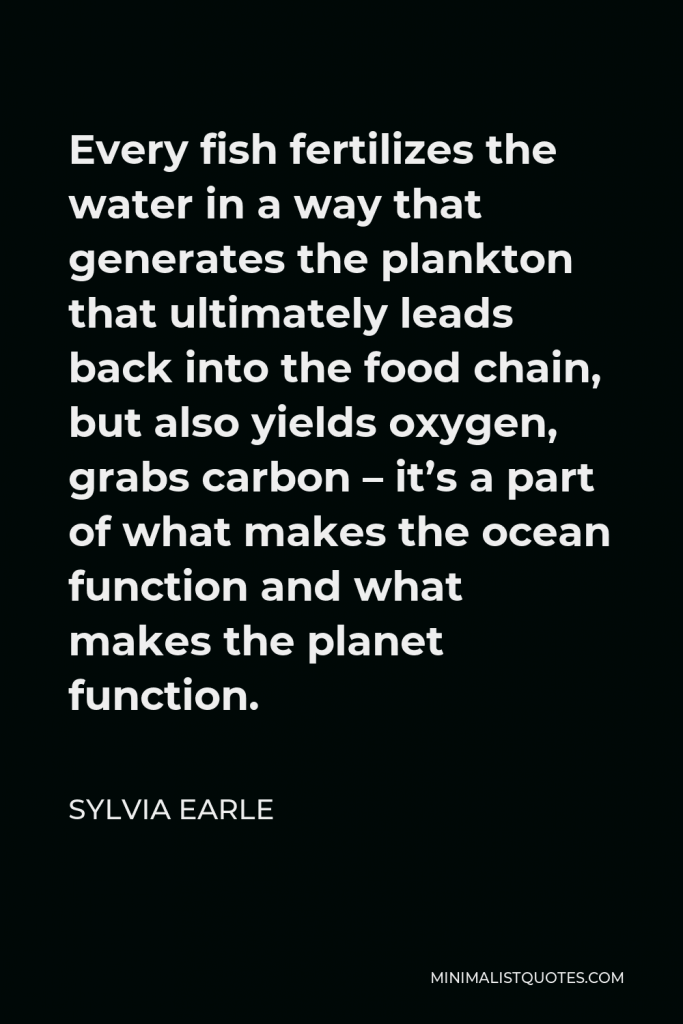

Every fish fertilizes the water in a way that generates the plankton that ultimately leads back into the food chain, but also yields oxygen, grabs carbon – it’s a part of what makes the ocean function and what makes the planet function.
SYLVIA EARLE -





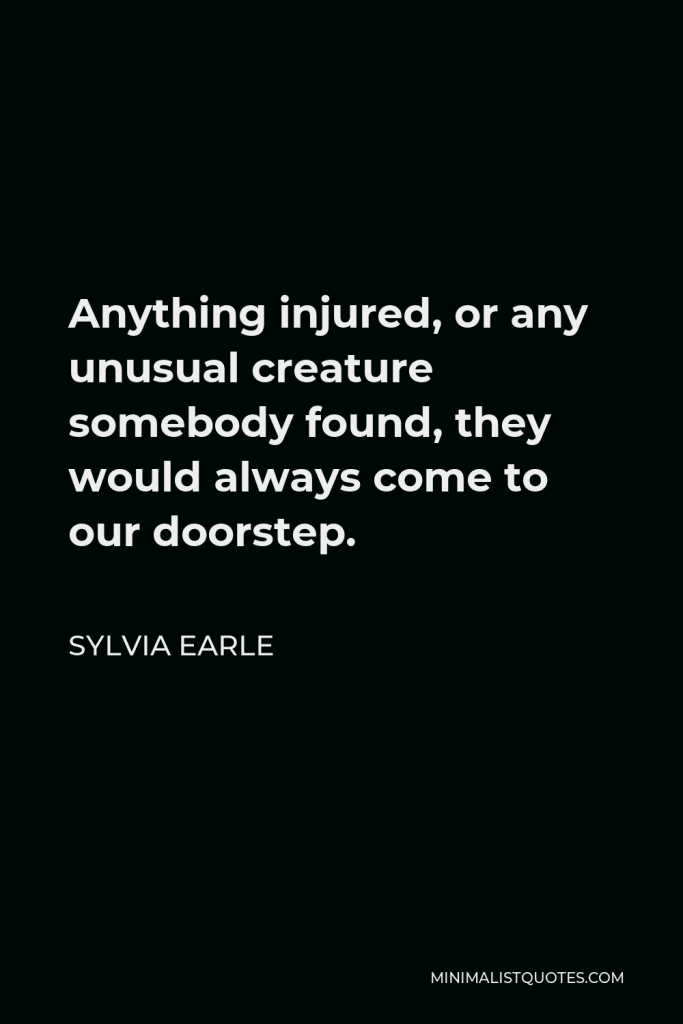

Anything injured, or any unusual creature somebody found, they would always come to our doorstep.
SYLVIA EARLE -







For heaven’s sake, when you see the enemy attacking, you pick up the pitchfork, and you enlist everybody you see.
SYLVIA EARLE -





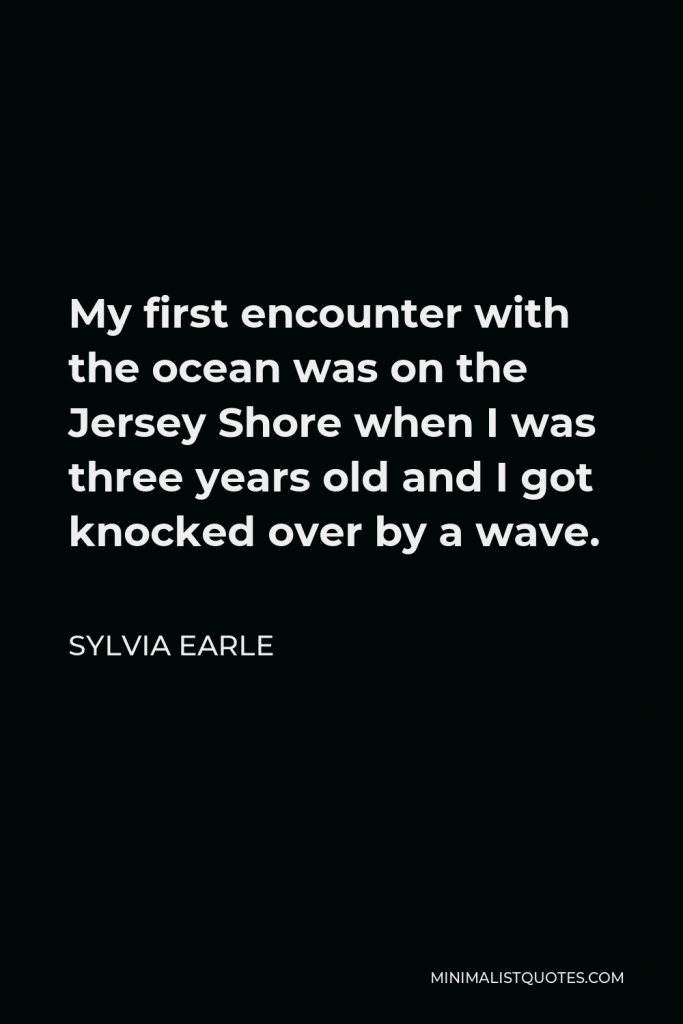

My first encounter with the ocean was on the Jersey Shore when I was three years old and I got knocked over by a wave.
SYLVIA EARLE -





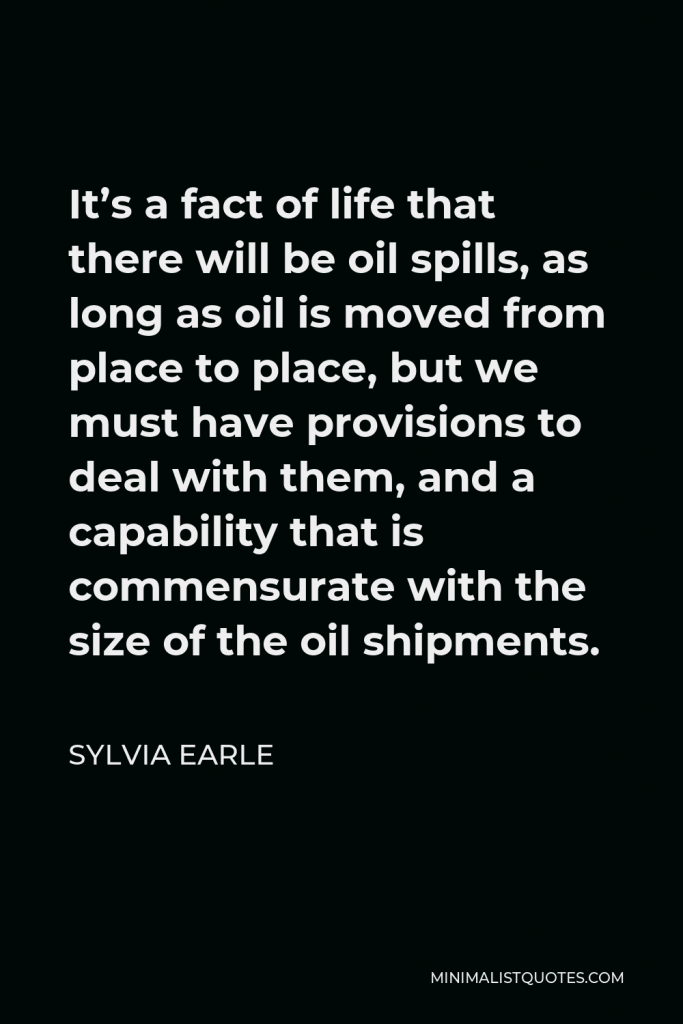

It’s a fact of life that there will be oil spills, as long as oil is moved from place to place, but we must have provisions to deal with them, and a capability that is commensurate with the size of the oil shipments.
SYLVIA EARLE -





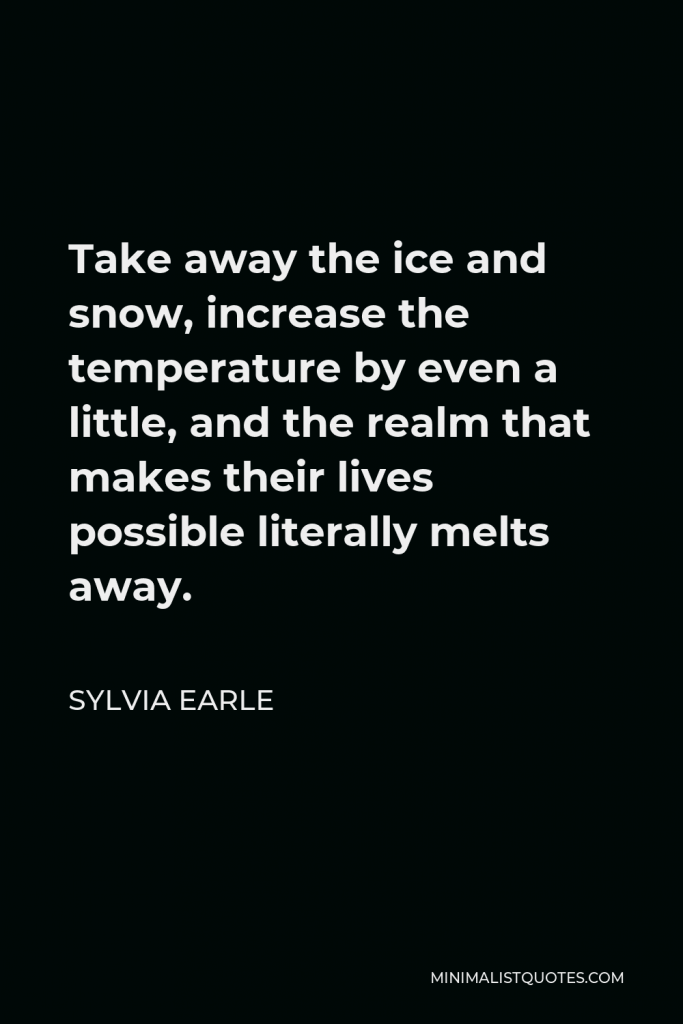

Take away the ice and snow, increase the temperature by even a little, and the realm that makes their lives possible literally melts away.
SYLVIA EARLE
